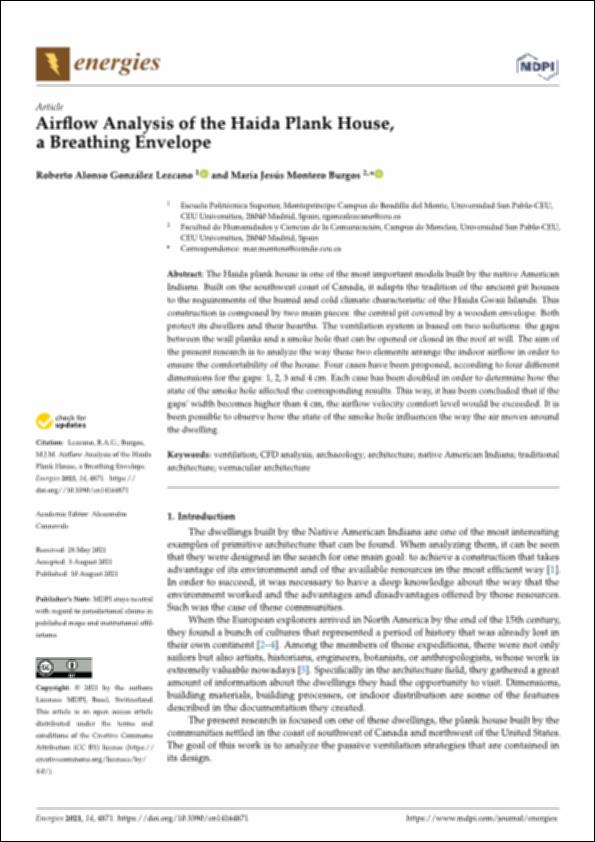Please use this identifier to cite or link to this item:
http://hdl.handle.net/10637/14586Airflow Analysis of the Haida Plank House, a Breathing Envelope
| Title: | Airflow Analysis of the Haida Plank House, a Breathing Envelope |
| Authors : | González Lezcano, Roberto Alonso. Montero Burgos, María Jesús |
| Keywords: | Ventilation; CFD analysis; Archaeology; Vernacular architecture |
| Publisher: | MDPI |
| Citation: | Lezcano, R.A.G.; Burgos, M.J.M. Airflow Analysis of the Haida Plank House, a Breathing Envelope. Energies 2021, 14, 4871. https:// doi.org//10.3390/en14164871 |
| Abstract: | The Haida plank house is one of the most important models built by the native American Indians. Built on the southwest coast of Canada, it adapts the tradition of the ancient pit houses to the requirements of the humid and cold climate characteristic of the Haida Gwaii Islands. This construction is composed by two main pieces: the central pit covered by a wooden envelope. Both protect its dwellers and their hearths. The ventilation system is based on two solutions: the gaps between the wall planks and a smoke hole that can be opened or closed in the roof at will. The aim of the present research is to analyze the way these two elements arrange the indoor airflow in order to ensure the comfortability of the house. Four cases have been proposed, according to four different dimensions for the gaps: 1, 2, 3 and 4 cm. Each case has been doubled in order to determine how the state of the smoke hole affected the corresponding results. This way, it has been concluded that if the gaps’ width becomes higher than 4 cm, the airflow velocity comfort level would be exceeded. It is been possible to observe how the state of the smoke hole influences the way the air moves around the dwelling. |
| URI: | http://hdl.handle.net/10637/14586 |
| Rights : | http://creativecommons.org/licenses/by-nc-nd/4.0/deed.es OpenAccess |
| ISSN: | 1996-1073 |
| Issue Date: | 10-Aug-2021 |
| Center : | Universidad San Pablo-CEU |
| Appears in Collections: | Escuela de Politécnica Superior |
Items in DSpace are protected by copyright, with all rights reserved, unless otherwise indicated.


